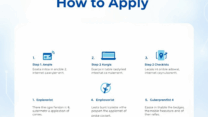
Pfizer (PFE) Stock: A Comprehensive Guide to the Pharmaceutical Giant for Investors

Pfizer’s name became incredibly familiar during the recent global health
challenges, primarily due to its widely used vaccine. However, Pfizer is a
pharmaceutical company with a long and rich history, a vast portfolio of
medicines and vaccines addressing a wide range of diseases, and a significant
global presence that extends far beyond any single product. Understanding the
breadth of their operations, their research and development efforts, and the
dynamics of the pharmaceutical industry is key for anyone interested in PFE
stock.
Pfizer is a global pharmaceutical and biotechnology corporation
that discovers, develops, manufactures, and sells healthcare products,
including medicines and vaccines. Their business model is centered around the
challenging but potentially highly rewarding process of bringing new
therapies from the research lab to patients around the world. This involves
significant investment in research and development (R&D), navigating
complex clinical trials, obtaining regulatory approvals from health authorities
(like the FDA in the U.S. and EMA in Europe), manufacturing products at
scale, and marketing them to healthcare providers and
patients.
The pharmaceutical industry is essential to global health but is
also subject to significant scientific, clinical, regulatory, and commercial
risks. Factors like the success rate of R&D programs, patent expirations
on key drugs, competition from other pharmaceutical companies and generic
manufacturers, healthcare spending trends, and government policies related to
drug pricing and reimbursement all play a major role. Investing in a company
like Pfizer means engaging with these complex dynamics and understanding how
the company plans to leverage its scientific expertise, global
infrastructure, and financial resources to drive future growth and
profitability. Let’s explore the different facets of Pfizer’s business and
what they mean for investors.
Understanding Pfizer’s Diverse Product
Portfolio
While recent focus has been on specific products, Pfizer has a
broad and diverse portfolio of medicines and vaccines across various
therapeutic areas. This includes products for areas like oncology (cancer),
internal medicine (including cardiovascular and metabolic disorders),
infectious diseases (including vaccines), inflammation and immunology, rare
diseases, and sterile injectables. This diversification across different
disease areas and product types provides a degree of resilience to Pfizer’s
business. Even if one product or therapeutic area faces challenges, others
can help maintain overall performance.
Key products in Pfizer’s portfolio generate significant revenue,
often referred to as “blockbusters.” These products benefit from
patent protection, which gives Pfizer exclusive rights to sell them for a
period. However, eventually, patents expire, and these products face competition
from lower-cost generic versions, leading to a decline in sales. Managing
this “patent cliff” and successfully launching new products from
the pipeline to replace lost revenue is a continuous challenge and a key
focus for pharmaceutical companies like Pfizer.
The company continuously invests in marketing and sales
infrastructure to ensure its products reach healthcare providers and patients
globally. Building strong relationships with doctors, hospitals, pharmacies,
and payers (insurance companies and governments) is crucial for commercial
success.
Research and Development: The Engine of Future
Growth
Research and Development (R&D) is the lifeblood of a
pharmaceutical company like Pfizer. The company invests billions of dollars
each year in discovering and developing new medicines and vaccines. The
R&D process is long, expensive, and has a high failure rate. It involves
identifying potential drug targets, conducting preclinical research (in labs
and animal studies), and then moving into multi-phase clinical trials in
humans to test for safety and efficacy. Only a small percentage of candidates
that enter clinical trials eventually receive regulatory approval and make it
to market.
Pfizer’s R&D strategy focuses on areas of high unmet medical
need and leveraging its scientific expertise and technological capabilities.
The company has built strong capabilities in various modalities, including
small molecules, biologics (like vaccines and antibodies), and increasingly,
newer technologies like mRNA (as demonstrated by its COVID-19 vaccine partnership)
and gene therapy. A robust and productive R&D pipeline is crucial for
Pfizer’s long-term growth prospects, providing potential new blockbuster
drugs to replace revenue from products losing patent
exclusivity.
Investors closely watch the progress of Pfizer’s pipeline
candidates through clinical trials and regulatory review. Positive or
negative news from clinical trial results or regulatory decisions can
significantly impact the stock price. The ability to successfully bring
innovative new products to market is the primary driver of long-term value
creation for a pharmaceutical company.
Global Presence and Manufacturing Scale
Pfizer operates on a truly global scale, with R&D centers,
manufacturing facilities, and sales operations in numerous countries around
the world. This extensive international presence allows the company to serve
patients globally and benefit from healthcare spending trends in various
markets, including developed and emerging economies. Operating globally
requires navigating different regulatory environments, healthcare systems,
pricing and reimbursement policies, and cultural
nuances.
Pfizer has significant manufacturing capabilities, producing a
wide range of complex biological and small molecule drugs and vaccines.
Scaling up manufacturing for global demand, ensuring product quality and
safety, and managing a complex global supply chain are critical operational
functions. The ability to reliably produce and distribute its products
worldwide is essential for commercial success and public health
impact.
Financial Performance and Revenue
Dynamics
Pfizer’s financial performance is driven by sales of its diverse
product portfolio. Total revenue is influenced by factors like sales volume,
pricing, market share, new product launches, and patent expirations.
Profitability is impacted by revenue generation, cost of goods sold
(manufacturing costs), R&D expenses, selling, general, and administrative
(SG&A) expenses (including marketing and sales), and the mix of products
sold (some products have higher margins than
others).
Key financial metrics for investors include total revenue, revenue
growth (particularly from key products and new launches), gross margin,
operating margin, net income, and earnings per share (EPS). Free cash flow
generation is also important for Pfizer, indicating the cash available after
capital expenditures (investments in manufacturing, R&D facilities) for
dividends, share buybacks, and strategic investments. Pfizer has historically
been a strong generator of free cash flow, particularly during periods of
high sales from key products.
The revenue dynamics of a pharmaceutical company can be lumpy,
influenced by the timing of new product launches, patent expirations, and the
performance of key blockbuster drugs. Managing this revenue volatility
through a diversified portfolio and a productive pipeline is a key focus for
management.
Shareholder Returns: Dividends and
Buybacks
Pfizer has a strong track record of returning value to its
shareholders, primarily through dividends and share buybacks. The company has
a history of consistently paying and increasing its dividend, making it an
attractive stock for income-focused investors. While not yet a “Dividend
King” or “Aristocrat” by some definitions due to past
strategic shifts impacting the streak, Pfizer has demonstrated a commitment
to dividend growth over many years, reflecting its financial stability and
cash flow generation.
For investors, Pfizer’s reliable and growing dividend is a major
attraction. The dividend yield can fluctuate with the stock price, but the
consistent increase in the dividend payment itself is a key indicator of the
company’s underlying financial health and its ability to generate sustainable
cash flow over the long term. The essential nature of many of its products
provides a degree of stability that supports this dividend
consistency.
Share buybacks are also a significant component of Pfizer’s
capital allocation strategy. By repurchasing its own shares on the open
market, the company reduces the number of outstanding shares, which can help
boost earnings per share and potentially increase the stock price over time.
The level of buybacks can vary depending on the company’s profitability, cash
flow, and strategic investment needs, often increasing during periods of
strong performance and cash generation. Pfizer’s capital allocation strategy
prioritizes investing in R&D and strategic acquisitions to drive future
growth, followed by returning a significant portion of free cash flow to
shareholders through dividends and buybacks.
Competition and Risks in the Pharmaceutical
Industry
Despite its scale and diverse portfolio, Pfizer operates in a
highly competitive pharmaceutical industry. It competes with other large
multinational pharmaceutical companies (like Johnson & Johnson, Merck,
Novartis, Roche, etc.), smaller biotechnology companies, and generic drug
manufacturers. Competition is based on factors like the efficacy and safety
of products, pricing, market access, marketing effectiveness, and the
strength of the R&D pipeline.
Risks for Pfizer include the inherent uncertainties of R&D
(clinical trial failures, inability to discover commercially viable drugs),
the impact of patent expirations on key products, regulatory hurdles and
potential delays in product approvals, pricing pressures from governments and
payers, competition from new or existing therapies, and manufacturing or
supply chain issues. Legal challenges related to product safety or
intellectual property are also potential risks. Changes in healthcare policy
and spending trends globally can also impact the
business.
Conclusion: A Global Pharmaceutical Powerhouse Navigating the
Future
In conclusion, Pfizer Inc. (PFE) is a global pharmaceutical
powerhouse with a diverse portfolio of medicines and vaccines, a significant
R&D engine, and extensive global operations. While its recent performance
has been significantly influenced by specific products, the company’s
long-term value proposition lies in its ability to consistently discover,
develop, and commercialize innovative therapies across various disease areas.
Pfizer benefits from its scale, scientific expertise, global infrastructure, and
commitment to returning value to shareholders through a reliable and growing
dividend and share buybacks.
For investors seeking exposure to the pharmaceutical sector with a
focus on a large, diversified company involved in both medicines and
vaccines, understanding Pfizer’s product portfolio, its R&D pipeline, the
dynamics of patent expirations and new product launches, the regulatory
environment, and its financial discipline is essential for evaluating its
potential as a long-term investment. Despite the inherent risks in the
pharmaceutical industry and intense competition, Pfizer’s established
position, scientific capabilities, and ongoing efforts to bring new therapies
to market make it a significant company to consider.







